Founded in 1992, Bolu Abant Izzet Baysal Üniversitesi (Bolu Abant Izzet Baysal University) is a non-profit public higher-education institution located in the rural setting of the small city of Bolu. Find out more: http://www.ibu.edu.tr/en
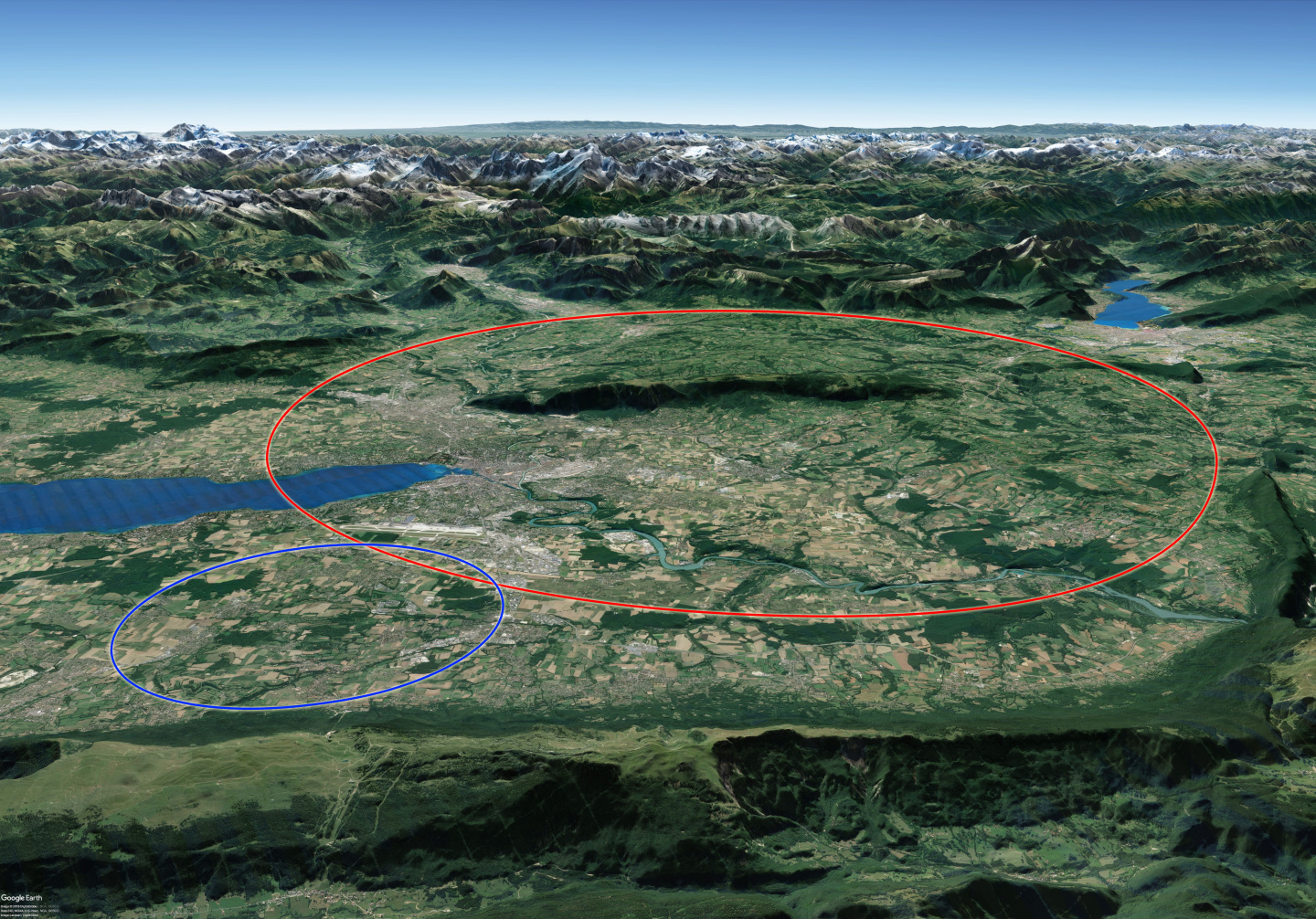
Founded in 1992, Bolu Abant Izzet Baysal Üniversitesi (Bolu Abant Izzet Baysal University) is a non-profit public higher-education institution located in the rural setting of the small city of Bolu. Find out more: http://www.ibu.edu.tr/en


The Brazilian Center for Research in Physics is a physics research center in the Urca neighborhood of Rio de Janeiro sponsored by the Brazilian National Council for Scientific and Technological Development, linked to the Ministry of Science and Technology.

IRFU, Institute of Research into the Fundamental Laws of the Universe, is a basic research institute of the CEA's Direction des sciences de la matière,. Its scientific activities cover the fields of astrophysics, nuclear physics, and particle physics. With such a wide range of topics, the institute must, of course, set itself highly ambitious goals. To that end, it can draw on a number of specific assets: scientific and technical skills, pooled resources, integration within the CEA, organizational structure, management-by-projects culture and, of course, its own experience and background.
IRFU's research activities call for highly concentrated human skills and material resources, as well as heavy equipment built around cutting-edge technologies and requiring further development work. Most of these activities are carried out as part of international programs, in institutions or external laboratories in close cooperation with many French and foreign laboratories.

ALBA (meaning "Sunrise" in Catalan and in Spanish) is a third-generation synchrotron light source facility located in the Barcelona Synchrotron Park in Cerdanyola del Vallès near Barcelona, in Catalonia (Spain). It was constructed and is operated by CELLS (sp: Consorcio para la Construcción, Equipamiento y Explotación del Laboratorio de Luz de Sincrotrón, the Consortium for the Exploitation of the Synchrotron Light Laboratory).
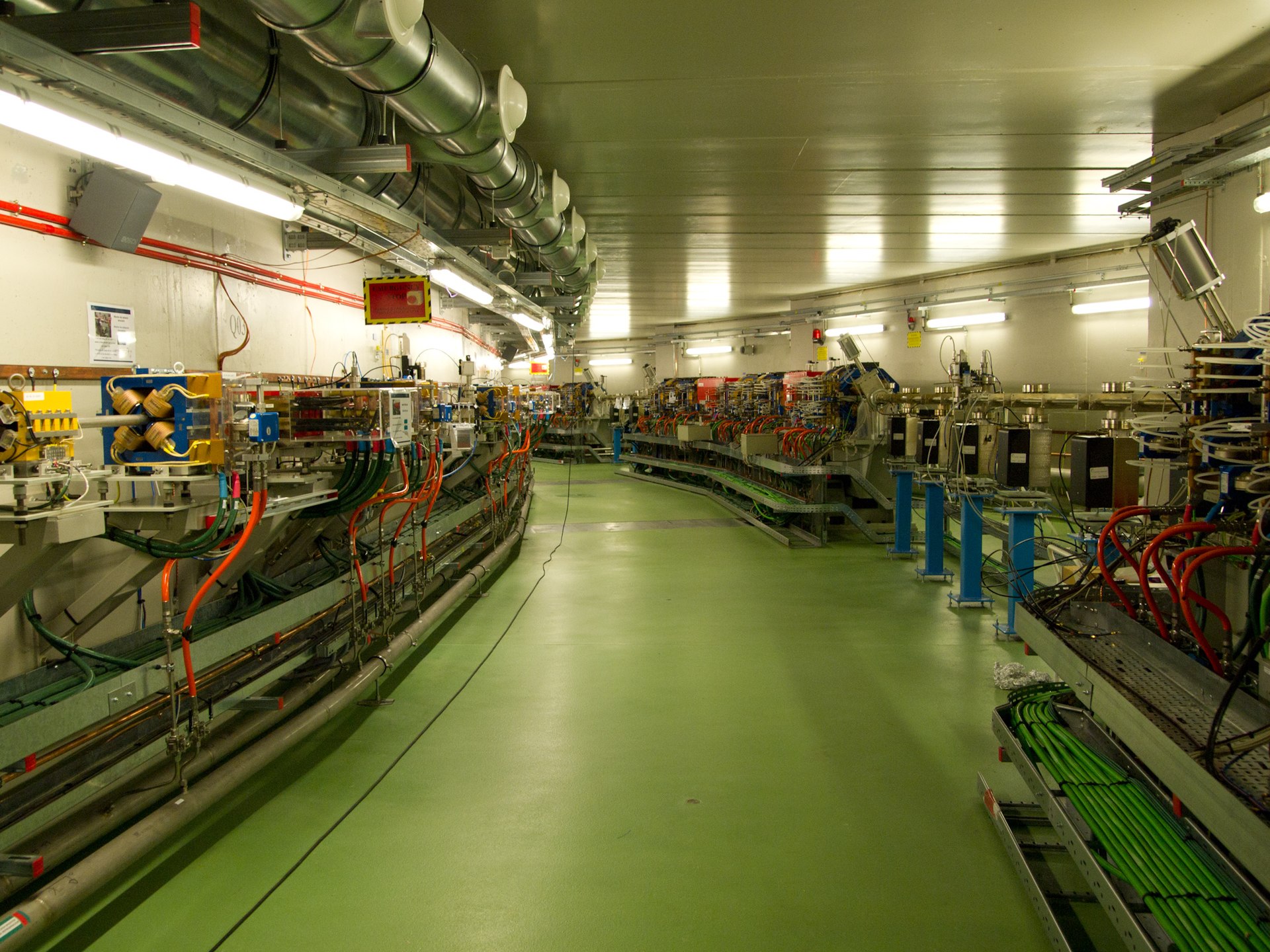

French public agency for developing public expertise in the fields of urban planning, regional cohesion and ecological and energy transition.

The Center for Tunnel Studies (CETU) is a central technical service of the Ministry of Ecology (or Sustainable Development), placed under the supervision of the Directorate General for Infrastructure, Transport and the Sea (DGITM ). Created on December 31, 1970, it is part of the French “Scientific and Technical Network” (RST).

The Cockcroft Institute is an international centre for Accelerator Science and Technology in the UK. It was proposed in September 2003 and officially opened in September 2006.
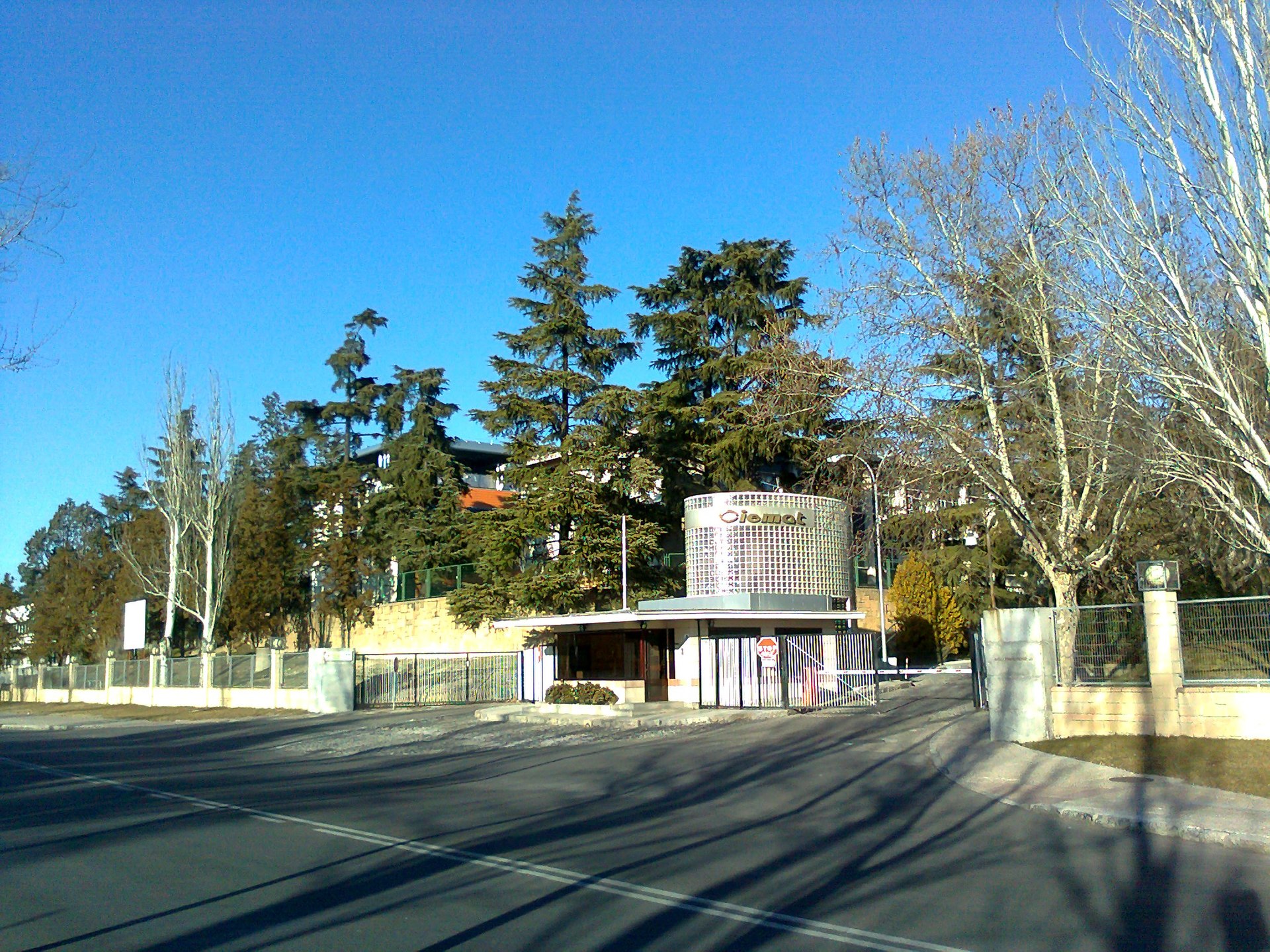
The Center for Energy, Environmental and Technological Research, till 1986 Junta de Energía Nuclear, is a Spanish public research institution. The CIEMAT Particle Physics Unit was awarded the accreditation as “Unit of Excellence” by the Spanish State Plan for Scientific and Technical Research and Innovation.

The French National Institute of Nuclear and Particle Physics (IN2P3) is the coordinating body for nuclear and particle physics in France. It was established in 1971 as a division of the French National Centre for Scientific Research (CNRS). Its purpose is "to promote and unite research activities in the various fields of physics".

When the founding members established the Centre for Industrial Studies (CSIL) in 1980, in Milan, they were inspired by the vision of the distinguished economists and entrepreneurs with whom they had been working.
Several of CSIL’s founding members and collaborators were students at ISTAO, the Adriano Olivetti Institute based in Ancona. Founded by Giorgio Fuà (1919-2000), ISTAO is one of the most prestigious schools of applied economics and business management operating in Italy. CSIL intellectual roots rely on Fuà’s ideas of economic development. They combine a Schumpeterian vision of development with the intuition that entrepreneurship results from a complex interaction between social, cultural, and political factors. This informs CSIL’s interest in industrial clusters, entrepreneurship dynamics, and economic development.
CSIL was also inspired by the entrepreneurial mindset of Alberto Zevi (1920-1993), one of its founding members. From him, CSIL inherited the vision that innovation is a never-ending process made of observation, imitation, and creative adaptation. In the delivery of its services, CSIL always strives for the valued ingredient of first-hand experience.
From both Fuà and Zevi, CSIL derived its cosmopolitan vocation. From a starting point in the thriving SMEs industrial context of Brianza (north of Milan), CSIL’s activities now extend worldwide, and in a wide range of sectors. CSIL works with a global outlook, seeking differences and similarities, best practices, and world-class knowledge, to be transferred where it is most needed.
Today, CSIL is a centre of excellence with a strong reputation for reliability and intellectual integrity.

Charles University is the oldest and largest university in the Czech Republic. It is one of the oldest universities in Europe in continuous operation. The university is one of the most productive scientific institutions in the Czech Republic.


The European Spallation Source is under construction on the outskirts of Lund, a city in southern Sweden. The facility's unique capabilities will both greatly exceed and complement those of today's leading neutron sources, enabling new opportunities for researchers across the spectrum of scientific discovery, including materials and life sciences, energy, environmental technology, cultural heritage and fundamental physics.
Advanced research requires advanced tools. Improved visualisation techniques enable researchers to observe our world and universe better. From the very large to the very small, when science moves forward, it is often due to breakthrough improvements in the tools available for scientific experiments.

ETH Zurich is a science and technology university with an outstanding research record. ETH Zurich is the study, research and work place of 18,000 people from 80 nations. About 350 professors in 16 departments teach mainly in the engineering sciences and architecture, system-oriented sciences, mathematics and natural sciences areas and carry out research that is highly valued worldwide.
In the 2022 edition of QS World University Rankings, ETH Zurich was ranked 8th in the world, placing it as the fourth-best European university after the University of Oxford, the University of Cambridge and Imperial College London. In the 2021 QS World University Rankings by subject, it ranked 4th in the world for engineering and technology (2nd in Europe) and 1st for earth and marine science. Also, ETH was rated 15th in the world in the Times Higher Education World University Rankings of 2021-22.


The GSI Helmholtz Centre for Heavy Ion Research is a federally and state co-funded heavy ion research center in the Wixhausen suburb of Darmstadt, Germany. It was founded in 1969 as the Society for Heavy Ion Research, abbreviated GSI, to conduct research on and with heavy-ion accelerators.

The Institute of High Energy Physics (HEPHY) is Austria's largest center for experimental and theoretical particle physics.

The Institute for High Energy Physics (Institut de Fisica d'Altes Energies, IFAE) of Barcelona, Spain, is a Public Consortium between the Generalitat de Catalunya (Government of the Autonomous Community of Catalonia) and the Universitat Autònoma de Barcelona (UAB).
At IFAE, the Institute for High Energy Physics at the Universitat Autònoma de Barcelona (UAB), we conduct experimental and theoretical research at the frontiers of fundamental physics, namely in Particle Physics, Astrophysics and Cosmology. We also work at the cutting edge of detector technology, putting our know-how to the service of more practical goals.

The Institute of Nuclear Physics Polish Academy of Sciences is a research center in the field of nuclear physics of the Polish Academy of Sciences, located in Cracow. It was founded in 1955 by Henryk Niewodniczański

The Fraunhofer Institute for Material Flow and Logistics IML is the first address in holistic logistics research and works in all fields of internal and external logistics. In line with the Fraunhofer idea, solutions to problems are developed for companies to use immediately, but preliminary research is also carried out over a period of two to five years, and in some cases even longer. 334 scientists and 250 PhD students and students currently work at the institute, which was founded in 1981, supported by colleagues in workshops, laboratories and service areas.
Teams put together according to project and customer requirements create cross-industry and customer-specific solutions in areas such as material flow technology, business process modeling and in the areas of traffic systems and resource logistics. Other current research priorities are in the field of artificial intelligence, smart finance and the "Internet of Things", which the institute coordinates Fraunhofer-wide. In addition, the Fraunhofer IML is working with the large-scale research project Silicon Economy on the implementation of a decentralized, federal and open platform economy in Germany and Europe. For interdisciplinary projects, the institute can fall back on a total of 29,000 employees in 75 facilities throughout the Fraunhofer-Gesellschaft. The management of the Fraunhofer Transport Alliance,

The INFN National Laboratory of Frascati was founded in 1954 with the objective of furthering particle physics research, and more specifically to host the 1.1 GeV electrosynchrotron, the first accelerator ever built in Italy. The Laboratory later developed the first ever electron-positron collider: from the first prototype AdA, which demonstrated the feasibility, to the ring ADONE and later on to DAΦNE, still operative today (2022). Besides conducting experiments with their own facilities, the LNF researchers are also taking part in extensive collaborations at external laboratories, especially at CERN and in the United States.

The University of Innsbruck is a public university in Innsbruck, the capital of the Austrian federal state of Tyrol, founded in 1669. It is currently the largest education facility in the Austrian Bundesland of Tirol, and the third largest in Austria.

The Institute for Research in Fundamental Sciences (IPM) conducts research in theoretical and applied particle and high energy physics.




The John Adams Institute for Accelerator Science is a centre of excellence in the UK for advanced and novel accelerator technology, providing expertise, research, development and training in accelerator techniques, and promoting advanced accelerator applications in science and society.


The High Energy Accelerator Research Organization (高エネルギー加速器研究機構) known as KEK, is a Japanese organization whose purpose is to operate the largest particle physics laboratory in Japan, situated in Tsukuba, Ibaraki prefecture. It was established in 1997.

Korea University is one of the two oldest private universities in the country. It is one of the oldest and most prestigious universities in the country. For the past 5 years, it has consecutively been ranked as one of the top 100 universities in the world by the QS.

The School is a place of genuine intellectual excitement and cutting-edge research. In the most recent national Research Excellence Framework (REF) LSE had the highest percentage of world-leading research of any university in the United Kingdom.


Nikhef is the Dutch National Institute for Subatomic Physics that performs research in particle physics and astroparticle physics.



The Paul Scherrer Institute PSI is the largest research institute for natural and engineering sciences in Switzerland, conducting cutting-edge research in the fields of matter and materials, energy and the environment and human health. By performing fundamental and applied research, we work on sustainable solutions for major challenges facing society, science and economy.
PSI develops, builds and operates complex large-scale research infrastructures, which are available to the national and international research community based on scientific excellence. All of these facilities are unique in Switzerland and some are unique in the world. PSI is the only place in the world where this combination of research infrastructures is found on one campus:

RTU is the largest science-based university in the Baltic States established in 1862. RTU has over 150 years of history as a centre of scientific excellence and has Nobel Prize winners, Presidents and Prime Ministers as former professors and students.


It is one of the largest European universities by enrollments and one of the oldest in history, founded in 1303. The University is one of the most prestigious Italian universities and in the world, commonly ranking first in national rankings and in Southern Europe. Since the 2011 reform, Sapienza University of Rome has eleven faculties and 65 departments. Today Sapienza, with 140,000 students and 8,000 among academic and technical and administrative staff, is the largest university in Italy. The university has significant research programmes in the fields of engineering, natural sciences.

Swisstopo is the official name for the Swiss Federal Office of Topography, Switzerland's national mapping agency. The current pseudo-English name was made official in 2002.
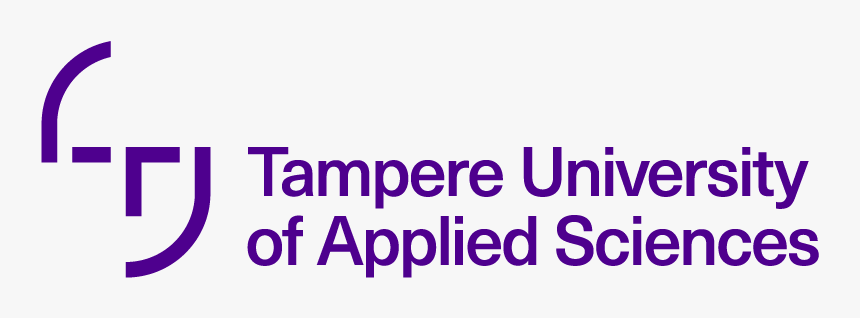
Tampere University is the second largest university in Finland, established in 2019 through the merger of Tampere University of Technology and the University of Tampere. It offers the broadest range of educational opportunities in Finland. Almost all internationally recognized fields of study are represented at our university.
Tampere University has competitive edges in technology, health and society. Its strength is the strong interplay between different research fields and our ability to apply and test our research results in real life situations; in cities, companies and societal services.

TU Wien is one of the major universities in Vienna, Austria. The university finds high international and domestic recognition in teaching as well as in research, and it is a highly esteemed partner of innovation-oriented enterprises

The Universidad Autónoma de Yucatán, or UADY, is an autonomous public university in the state of Yucatán, Mexico, with its central campuses located in the state capital of Mérida
The University of Bern is a university in the Swiss capital of Bern and was founded in 1834. It is regulated and financed by the Canton of Bern. It is a comprehensive university offering a broad choice of courses and programs in eight faculties and some 150 institutes.


For more than a century, the University of Birmingham has been pursuing and sharing knowledge through outstanding teaching and world-leading research.
We are the original ‘redbrick’ University, part of the prestigious Russell Group; our thriving student population enjoys a wide range of courses, and exceptional campus and research facilities.

The Goethe University Frankfurt am Main was founded in 1914 and is organized since 2008 as a “foundation under public law”. This allows for a higher degree of autonomy, together with the potential of private sponsorship in addition to the financial support by the federal state of Hesse. Currently the university has more than 38.000 students and more than 550 full and associate professors. The Institute of Applied Physics (IAP) belongs to the Physics Department of the Goethe University Frankfurt. Our working group is part of the IAP “Accelerator and Plasma Physics” division. The main research activities are related to the production, transport, acceleration and accumulation of intense proton and ion beams. Besides of more theoretical researches like beam dynamics designs and simulation code development, our group has gained a long term expertise in the design and construction of ion sources, room temperature and superconducting accelerator cavities, as well as the development of beam and plasma diagnostic devices and methods.

The University of Houston is a public research university in Houston, Texas. Founded in 1927, UH is the flagship institution of the University of Houston System and the third-largest university in Texas with over 47,000 students

As a University of Excellence, Universität Hamburg is one of the strongest research universities in Germany. As a flagship university in the greater Hamburg region, it nurtures innovative, cooperative contacts with partners inside and outside academia. It also provides and promotes sustainable education, knowledge, and knowledge exchange locally, nationally, and internationally.
Universität Hamburg boasts numerous interdisciplinary research projects in a broad range of fields and an extensive partner network with leading research and higher education institutions on a regional, national, and international scale

The University of Iowa is a public research university in Iowa City, Iowa. Founded in 1847, it is the oldest and the second-largest university in the state. The University of Iowa is organized into 12 colleges offering more than 200 areas of study and seven professional degrees.

Lancaster University is a highly ranked UK university with a global reputation for excellence in research and teaching. Lancaster is consistently ranked among the top 15 in all three major UK university league table, and continues to build a growing reputation both nationally and internationally.
The University offers a wide range of programmes at foundation, undergraduate, postgraduate and PhD level and well as development courses for professionals.

The University of Basel is a university in Basel, Switzerland. Founded on 4 April 1460, it is Switzerland's oldest university and among the world's oldest surviving universities. The university is traditionally counted among the leading institutions of higher learning in the country.

With a cohort of over 16,500 students from 150 different nationalities, the University of Geneva (UNIGE) is Switzerland’s second largest university.
It was originally established as a theological seminary in 1559 by leading French theologian and pastor, Jean Calvin. It was granted university status in 1873 when it also relinquished its religious affiliations and became a secular institution.
UNIGE offers almost 300 degrees programmes. Although its undergraduate courses are taught primarily in French, the university also offers a number of masters programmes in English.
It is also a leading research university and a member of the League of European Research Universities, along with other renowned research-led institutions such as the Universities of Oxford and Cambridge, and Imperial College London. UNIGE claims associations with 10 Nobel Prize winners.

The University of Genoa, known also with the acronym UniGe, is one of the largest universities in Italy. It is located in the city of Genoa and regional Metropolitan City of Genoa, on the Italian Riviera in the Liguria region of northwestern Italy. The original university was founded in 1481

Heidelberg University, officially the Ruprecht Karl University of Heidelberg, is a public research university in Heidelberg, Baden-Württemberg, Germany. Research encompasses core areas of fundamental physics as well as interdisciplinary border areas. In the core areas, research focuses on elementary particle physics, the structure and evolution of the universe, and the properties of complex classical and quantum systems. The interdisciplinary border areas include environmental physics, bio- and medical physics as well as technical computer science.

The University of Leoben in Austria is the country's university for mining, metallurgy and materials. It was founded on 4 November 1840 as the Steiermärkisch-Ständische Montanlehranstalt in Vordernberg, Styria, Austria's mining region.

The University of Liverpool is a public research university based in the city of Liverpool, England. Founded as a college in 1881, it gained its Royal Charter in 1903 with the ability to award degrees and is also known to be one of the six 'red brick' civic universities, the first to be referred to as The Original Red Brick. It comprises three faculties organised into 35 departments and schools. It is a founding member of the Russell Group, the N8 Group for research collaboration and the university management school is triple crown accredited.[6]

The University of Milan, known colloquially as UniMi or Statale, is a public research university in Milan, Italy. It is one of the largest universities in Europe, with about 60,000 students, and a permanent teaching and research staff of about 2,000.


The University of Rostock is the oldest one in the Baltic Sea region with a wide spectrum of scientific disciplines and a number of closely linked side institutes. The University of Rostock consists of nine traditional faculties. The recently founded interdisciplinary faculty promotes an intensive cooperation between all faculties and highly efficient coordination of research activities.
Currently, it hosts more than 15,000 students and offers more than 100 fields of study leading to the Bachelor’s and Master’s degrees, respectively. UROS is widely regarded as one of the most important intellectual hubs in northern Germany, where it serves as focal point of a rapidly developing high-tech region and provides considerable experience in managing numerous research contracts of national and international scope.

The University of Saskatchewan is the largest education institution in the Canadian province of Saskatchewan. The University of Saskatchewan is one of Canada's top research universities (based on the number of Canada Research Chairs) and is a member of the U15 Group of Canadian Research Universities (the 15 most research-intensive universities in Canada).

Siegen has four faculties: Arts and Humanities, Education, Architecture and Arts, Economic Disciplines and Science and Technology.
The university has over 120 international partnerships and takes part in ERASMUS exchanges.
As a high-profile research university, Siegen is home to several notable centres of investigation in fields such as particle physics, teacher training and gender studies, to name but a few.

The university offers higher education and research facilities. It offers undergraduate, masters, and PhD degree programs, as well as postgraduate, postdoctoral research, habilitation, and continuous education and training programs.

The University of Stuttgart is a leading technically oriented university in Germany with a worldwide reputation. It sees itself as a hub for university, non-university and industrial research and as a guarantor of quality and holistic, research-led teaching . The university promotes the transfer of knowledge and technologies to society in all of its profile, competence and potential areas. The Stuttgart Way stands for interdisciplinary integration of engineering, natural sciences, humanities, economics and social sciences on the basis of top-level disciplinary research. Their vision is "Intelligent systems for a sustainable society".
The University of Stuttgart is a leading research university located in Stuttgart, Germany. It was founded in 1829 and is organized into 10 faculties. It is one of the oldest technical universities in Germany with highly ranked programs in civil, mechanical, industrial and electrical engineering, among others. It is a member of TU9, an incorporated society of the largest and most notable German institutes of technology.

The University of Tokyo, abbreviated as Todai or UTokyo, is a public research university located in Bunkyō, Tokyo, Japan. Established in 1877, the university is the first Imperial University and currently selected as a Top Type university of Top Global University Project by the Japanese government. The University of Tokyo, started, on May 28, 2021, construction of the "Hyper-Kamiokande" device, for a new world-leading international scientific research project which is set to start experiments in 2027.

The Wigner Research Centre for Physics was founded on 1 January 2012 by the merging of two former research institutes of the Hungarian Academy of Sciences: the Research Institute for Particle and Nuclear Physics, and the Research Institute for Solid State Physics and Optics. In our Research Centre there are 40 research groups. Their research interests cover diverse topics ranging from particle physics to space physics, and from theoretical physics to applied research.
The Wigner Research Centre for Physics, a part of the Hungarian Academy of Sciences, is a data centre on a research campus about 10 kilometers from Budapest. Wigner Research Centre for Physics deals with the following main research areas as research activities: Experimental and theoretical particle physics, nuclear physics, general theory of relativity and gravitation, fusion plasma physics, space physics, nuclear materials science, mainly in the Institute for Particle and Nuclear Physics.
In order to be able to meet the ever-increasing demands of the LHC experiments, and to be able to ensure the availability of critical services in the event of a major incident at the CERN Data Centre, CERN IT is installing equipment at the Wigner Data Centre in Budapest, Hungary. The capacity at Wigner is remotely managed from CERN, substantially extending the capabilities of the Worldwide LHC Computing Grid (WLCG) Tier-0 activities.

Installé au cœur d'un environnement scientifique, industriel et universitaire très riche, le centre CEA-Grenoble consacre l'essentiel de ses recherches au développement de solutions innovantes, dans les domaines de l'énergie, de la santé, de l'information et de la communication.
![]()
With around 13,000 graduates thus far and 4,400 students, the University of Applied Sciences Technikum Wien is Austria’s only purely technical university of applied sciences. At UAS Technikum Wien, emphasis is not only placed on providing a high-quality technical education, but also on subjects with a focus on business and personal development. Close ties and collaborations with business and industry give students and graduates excellent career opportunities.
Website: https://www.technikum-wien.at/

The Helsinki Institute of Physics is a physics research institute operated jointly by University of Helsinki, Aalto University, University of Jyväskylä, Lappeenranta University of Technology and Tampere University of Technology. The institute is responsible for the Finnish research collaboration with CERN and Facility for Antiproton and Ion Research in Europe GmbH (FAIR).

The Vrije Universiteit Brussel (VUB) is a Dutch and English-speaking research university located in Brussels, Belgium.[7] It has four campuses: Brussels Humanities, Science and Engineering Campus (in Elsene), Brussels Health Campus (in Jette), Brussels Technology Campus (in Anderlecht) and Brussels Photonics Campus (in Gooik).

The National Institute of Geographic and Forest Information (IGN) is a public administrative establishment placed under the joint authority of the Ministries in charge of ecology and forestry.

Tokyo International University is a private, research-oriented liberal arts university in collaboration with Tokyo University in Greater Tokyo Area that is regarded as one of the most international institutions of higher learning in Japan.
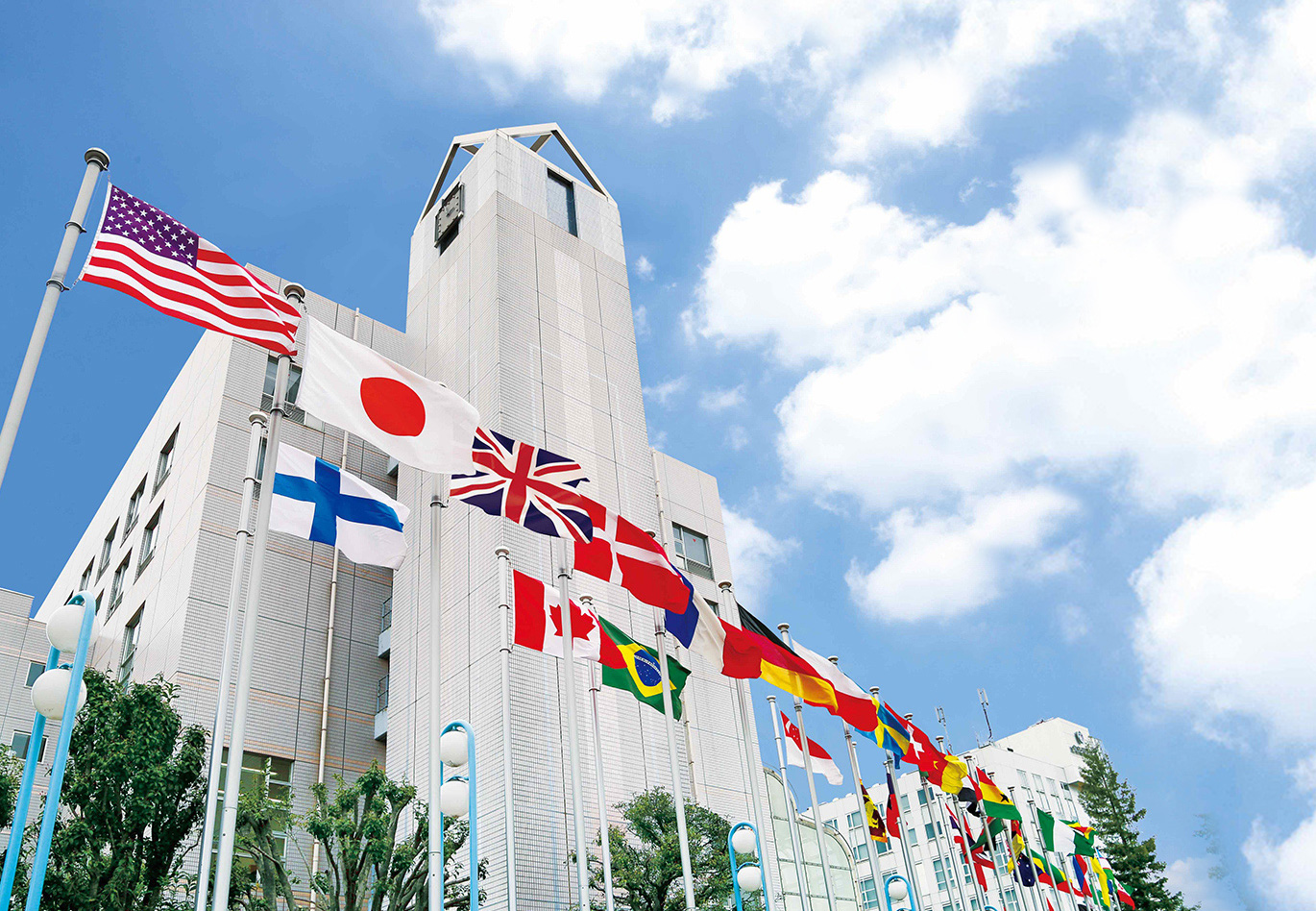
Tokyo International University (TIU) is a private university founded in 1965 and is accredited by the Ministry of Education of Japan (MEXT). Since its founding, TIU has grown to encompass five undergraduate and four graduate schools, offering study options in business, commerce, and social sciences. In addition to Japanese-medium degree programs, in 2014 TIU began offering degree programs taught in English through its E-Track Program.
Staying consistent with its educational philosophy of “nurturing truly international-minded people,” TIU boasts a highly international learning environment. Of TIU’s approximately 6,500 students, roughly 1,300 are international students from 68 countries. Students have opportunities for further study abroad through TIU’s impressive study abroad network, including the campus of sister school Willamette University in Salem, Oregon. Through practice-oriented courses taught by an international faculty, interaction with peers from around the world, and exploring the exciting city of Tokyo, students can develop the skills and experiences needed to launch their global careers.
LIP, Laboratory of Instrumentation and Experimental Particle Physics, is the reference institution for experimental particle physics and associated technologies in Portugal. It was founded in May 1986 to exploit the unique opportunities created by the country’s accession to CERN, the European particle physics laboratory. LIP brought experimental particle physics in Portugal to a truly international ground and will continue leading this challenge.


EPFL is Europe’s most cosmopolitan technical university. It welcomes students, professors and collaborators of more than 120 nationalities. EPFL has both a Swiss and international vocation and focuses on three missions: teaching, research and innovation. EPFL collaborates with an important network of partners, including other universities and colleges, industry and the economy, political circles and the general public, with the aim of having a real impact on society.

Istinye University was established in 2015 by the 21st Century Anatolian Foundation as the continuation of a 29-year knowledge and experience of the MLP Care Group which has brought three different hospital brands, namely, “Liv Hospital”, “Medical Park” and “VM Medical Park” under one roof.
With its academic staff successfully committed to education and research to make a difference, Istinye University aims to take a place among Turkey and the world’s most prestigious universities by contributing to producing new knowledge through its education and research performance while helping its students become well-equipped in their fields by sharing existing knowledge with them.
Istinye University (ISU) has a constantly growing research group specialized in High Energy and Particle Physics (HEPP). The group includes senior physicist and postdocs, and is in close relation with both the Institute of Applied and Natural Sciences and the Faculty of Engineering and Natural Sciences. ISU-HEPP members collaborate in various experiments and programs such as ATLAS, BESIII, CAST and FCC. The HEPP group at ISU plans to grow further by joining new experimental collaborations and running local R&D projects on particle detectors and accelerators.

Applying a student-oriented understanding of education to all of its processes, Istinye University intends to expand the borders of science thanks to the academic staff’s research, put the findings obtained through scientific developments into practice for social welfare, and offer quality and accessible health services to the society in line with its vision of being a science and research center. By conducting education, research and social service activities at universal standards, the university provides its students with a wide range of knowledge, as well as a learning and progressive environment that also covers the fields of technology and art.
By elevating the competent, creative and forward-looking individuals of the future, Istinye University aims at contributing to the progress of humankind and playing a significant role in the social, cultural, economic, scientific and technological development of our society.

The University of Graz is the largest and oldest university in Styria, as well as the second-largest and second-oldest university in Austria. Through decades of intensive collaboration with institutions in South-Eastern Europe it has acquired a profound knowledge about this region, which has become a main interdisciplinary focus. Students can choose from a total of more than 120 studies. Bachelor’s, master’s and joint degree programmes as well as summer schools provide compatibility with international systems. Selected doctoral programmes create an ideal basisfor an academic career. As a modern scientific institution the University of Graz pools first-rate research in many projects and co-operations on a national as well as on an international level. Collaboration with 500 partner institutions worldwide embodies the integration of the Universityof Graz in a global network, enriches the scientific life and ensures high quality of teachingand research.

National Institute Of Chemical Physics And Biophysics NICPB is interdisciplinary Research Institute, which carries out basic and applied research in materials science, genetic engineering and biotechnology, environmental technology, in the field of particle physics and informatics.
The University of Tartu is a rapidly developing international research university, the centre of academic spirit in Estonia as a national university, and a leader in social development.

The University, which is based in Tartu, Estonia, has an enrollment of over 14 000 degree students, including over 1800 international students from all over the world.
The University of Tartu was founded in 1632 and therefore is the oldest institution of higher education in Estonia. The University of Tartu now includes four faculties: arts and humanities, social sciences, medicine, and science and technology.
The University of Tartu belongs to the top 1,2% of the world’s universities according to the QS World University Rankings 2022 and is the highest-ranked University in Estonia.
The University of Tartu is a member of several reputable international networks and alliances, such as ENLIGHT (https://enlight-eu.org/), the Coimbra Group (https://www.coimbra-group.eu/), Utrecht Network (http://www.utrecht-network.org/) and The Guild (http://www.the-guild.eu/).
The vision for future circular colliders that could operate after the LHC is one of the largest international scientific projects that has ever been undertaken, and provides an ideal testbed for the University of Tartu’s nascent ideas for the sustainable development and operation of these machines. Profiting from the University of Tartu’s expertise, the MoU will offer to the FCC project the long-term support that it needs, and Estonia, as an associate member will get a tangible return on its investment in basic science
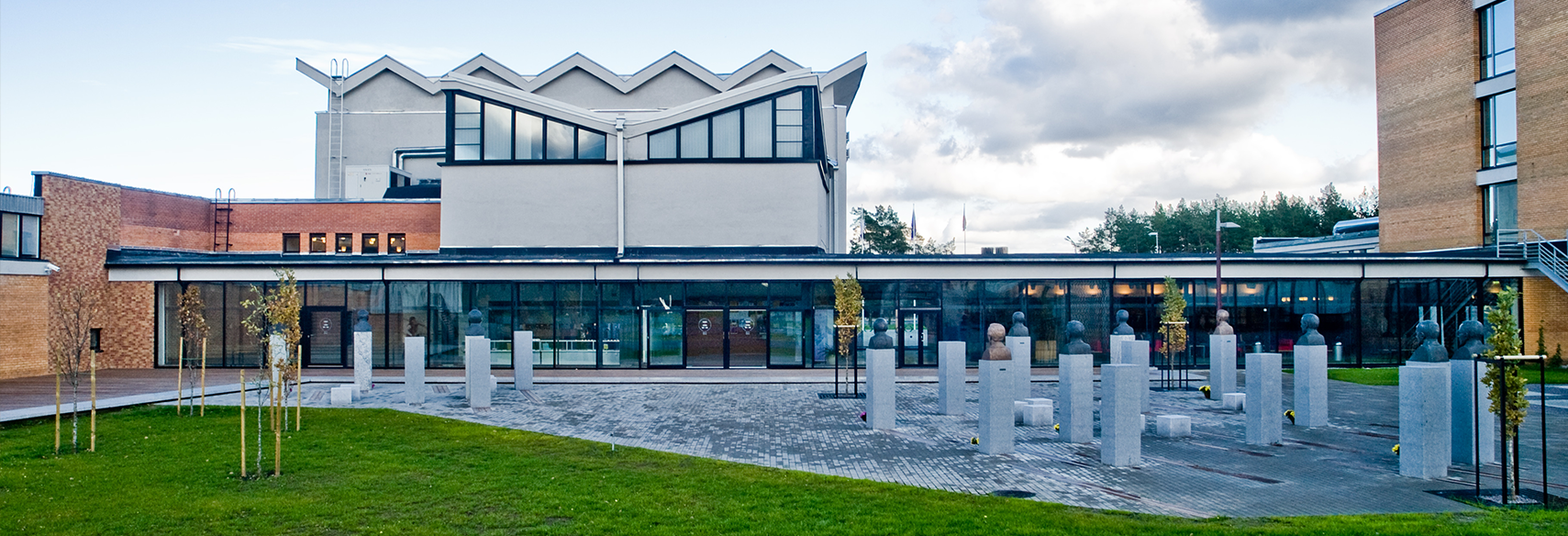 Tallinn University of Technology (TUT) was founded in 1918 when the Estonian Engineering Society brought together local technology experts to provide courses in, what was then, German-occupied Estonia. The country gained independence that same year and, in the following year, it became a private institution named the Tallinn College of Engineering.
Tallinn University of Technology (TUT) was founded in 1918 when the Estonian Engineering Society brought together local technology experts to provide courses in, what was then, German-occupied Estonia. The country gained independence that same year and, in the following year, it became a private institution named the Tallinn College of Engineering.
Today, TUT is a public university located in the heart of Estonia’s capital city. It is also the country’s only technical university.
Serving close to 12,000 students, including more than 1,000 international students, the university offers around 30 undergraduate programmes, 50 at master’s level and 10 PhDs.
The institution is organised across 16 different faculties, institutes and colleges, with over 2,000 members of staff, including around 120 international academic staff.
Situated in the Mustamäe region of Tallinn, TUT claims to be the only campus university within the Baltic States. Set in 55 hectares of land, the campus is home to many high-tech companies as well as the Estonian Information Technology College, a science park, the 19th century Glehn Castle, as well as a library, museum, restaurants, bars and residential areas.

NPM SIlmet OÜ is located in Sillamäe, Ida-Virumaa. NPM Silmet OÜ is one of Europe's largest rare metal and rare earth metal manufacturers, as well as the only processor outside of China with such a wide range of high-purity products. The company is global indeed - 99% of the materials used for production are purchased from outside of Estonia (mainly Brazil, USA and Russia), with 99% of the output sold abroad (mainly the European Union, USA and Japan). NPM SIlmet OÜ has three plants: a rare earth metals plant with an annual production of 3,000 tonnes, a rare metals plant with an annual production of 700 tonnes and a metallurgy plant.
NPM SIlmet OÜ' products are used in the car industry, aviation industry and electronic industry, as well as in high-tech applications. Up to a tenth of the tantalum and up to a fifth of the metallic niobium consumed by the world is currently produced by NPM SIlmet OÜ.
The company was initially founded in 1920 when a Swedish company established a local oil shale processing plant in Estonia. In the Soviet times, the company operated under the name of Plant No. 7, processing uranium. The production of rare metals and rare earth metals was launched in the 1970s. In 1990, the company was renamed Silmet, with the uranium processing shut down and focus set on rare metals and rare earths production. In 2011, AS Silmet merged with the Molcorp Minerals and was renamed Molycorp Silmet AS, and after NPM SIlmet OÜ.

The company has a deep and almost unbearable passion towards three things: FPGAs, testing and innovation. As a result, in 2011 Testonica invented and brought to market Embedded Virtual Instrumentation technology. Later, we started to build the industry’s first instrument synthesis cloud.
Today, thanks to 15 years of industrial experience with hundreds of solutions delivered worldwide, we possess a huge in-house library of test & measurement instrumentation IPs forming a solid basis for a fully automated test system. As a result, we are bearing full responsibility for the test quality by delivering a proven ready-to use test solution.

GScan, a deep tech company that develops cosmic ray 3D scanners for security and cargo scanning. The company is working with customs, universities, research centers, and security companies in Europe to develop an autonomous state-of-the-art cosmic ray 3D scanner that fits well within the existing infrastructure to enable quick adoption.
GScan is a deep tech startup that aims to bring a new type of 3D scanner and tomograph to the market that uses only natural radiation to scan. GScan international team combines top-level skills on security business, AI, tomographic algorithms, detector tech and holds patented algorithms for object detection and material identification. What distinguishes GScan equipment from existing X-ray equipment is the complete automation and high material detection capability.
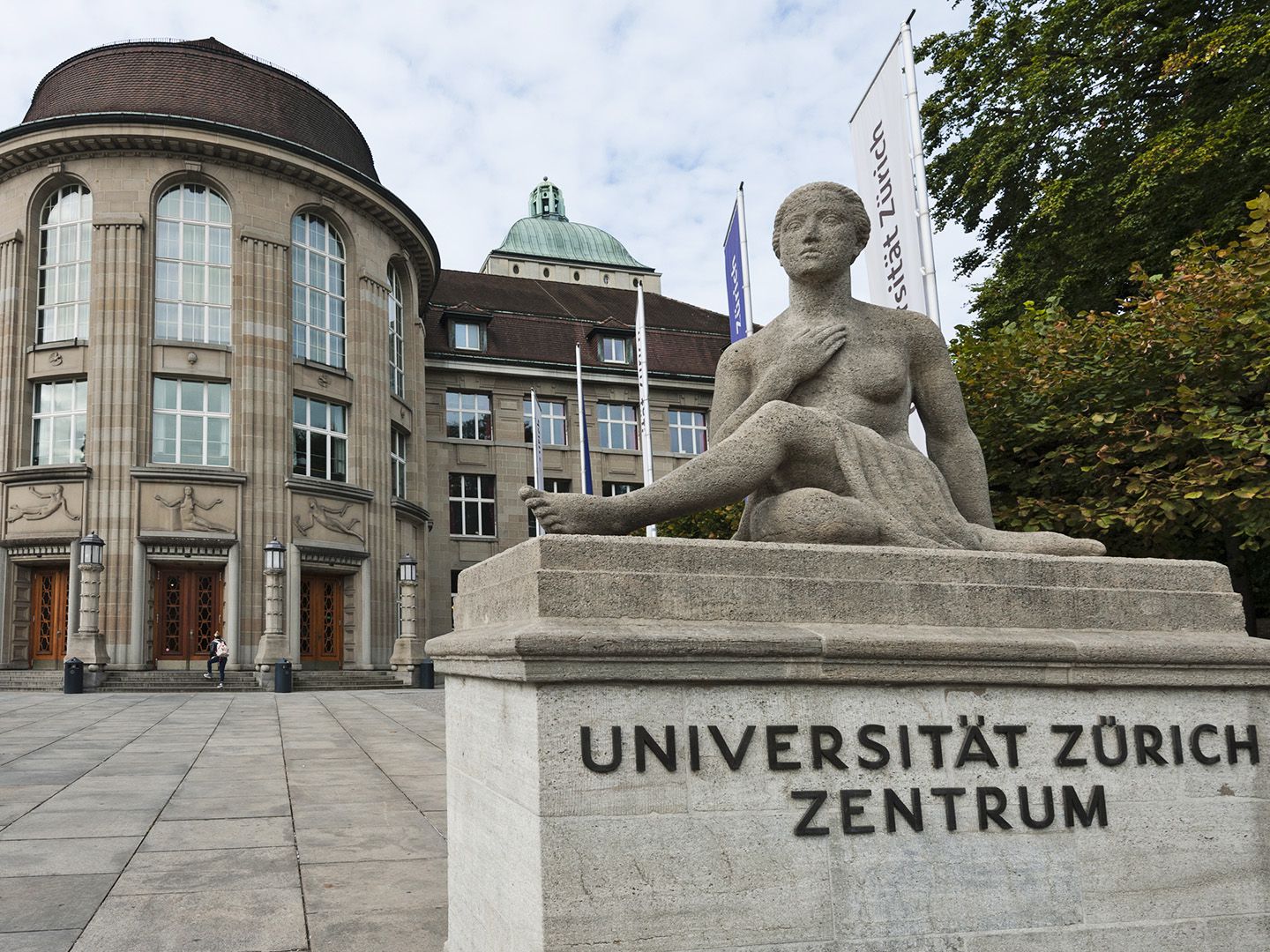
With its 28,000 enrolled students, the University of Zurich (UZH) is Switzerland's largest university. Founded in the year 1833, UZH was Europe's first university to be established by a democratic political system; today, UZH is one of the foremost universities in the German-speaking world. Made up of seven faculties covering some 100 different subject areas, the University offers a wide variety of Bachelor's, Master's and PhD programs. In addition, UZH's continuing education programs offer excellent learning opportunities.
As a member of the "League of European Research Universities" (LERU) and "Universitas 21" (U21) network, the University of Zurich belongs to Europe's most prestigious research institutions. In 2017, the University of Zurich became a member of the Universitas 21 (U21) network, a global network of 27 research universities from around the world, promoting research collaboration and exchange of knowledge. Numerous distinctions highlight the University's international renown in the fields of medicine, immunology, genetics, neuroscience and structural biology as well as in economics. To date, the Nobel Prize has been conferred on twelve UZH scholars.
The academic excellence of the University of Zurich brings benefits to both the public and the private sectors not only in the Canton of Zurich, but throughout Switzerland. Knowledge is shared in a variety of ways: in addition to granting the general public access to its twelve museums and many of its libraries, the University makes findings from cutting-edge research available to the public in accessible and engaging lecture series and panel discussions.
* the participation is done through the ‘Addendum III to Accelerator Protocol III to the Cooperation Agreement between the European Organization for Nuclear Research (CERN) and the Department of Energy of the United States of America (DOE) to the Cooperation Agreement concerning Scientific and Technical Cooperation in Nuclear and Particle Physics.
| Country | Institute | City |
|---|---|---|
| Austria | University of Innsbruck | Innsbruck |
| Austria | Technical University Vienna (TU WIEN) | Vienna |
| Austria | BECC GmbH | Wiener Neudorf |
| Austria | University of Leoben | Leoben |
| Austria | HEPHY | Vienna |
| Austria | University of Applied Sciences - Technikum Wien | Vienna |
| Austria | University of Natural Resources and Life Sciences (BOKU) | Vienna |
| Austria | University of Graz | Graz |
| Austria | Österreichisches Institut für Wirtschaftsforschung (WIFO) | Wien |
| Austria | Johannes Kepler University (JKU) | Linz |
| Country | Institute | City |
|---|---|---|
| Belgium | University of Liège | Liège |
| Belgium | Vrije Universiteit Brussel | Brussels |
| Country | Institute | City |
|---|---|---|
| Brazil | Brazilian Center for Research in Energy and Materials (CNPEM) | Campinas |
| Brazil | Federal University of Rio Grande do Norte (UFRN) | Natal |
| Brazil | Centro Brasileiro de Pesquisas Físicas (CBPF) | Rio de Janeiro |
| Country | Institute | City |
|---|---|---|
| Canada | University of Saskatchewan | Saskatoon |
| Country | Institute | City |
|---|---|---|
| Chile | Millenium Institute SAPHIR | Las Condes |
| Chile | Pontificia Universidad Católica de Chile | Santiago |
| Country | Institute | City |
|---|---|---|
| Colombia | Universidad Nacional de Colombia | Bogotá |
| Country | Institute | City |
|---|---|---|
| Czech Republic | Charles University | Prague |
| Czech Republic | Faculty of Nuclear Sciences and Physical Engineering, Czech Technical University in Prague | Prague |
| Country | Institute | City |
|---|---|---|
| Denmark | Niels Bohr Institute (NBI) | Copenhagen |
| Country | Institute | City |
|---|---|---|
| Estonia | GScan OÜ | Tallinn |
| Estonia | Testonica Labs | Tallinn |
| Estonia | NPM Silmet OÜ | Sillamäe, Estonia |
| Estonia | University of Tartu | Tartu |
| Estonia | National Institute for Chemical Physics and Biophysics | Tallinn |
| Estonia | Tallinn University of Technology | Tallin |
| Country | Institute | City |
|---|---|---|
| Finland | Tampere University of Technology (TAU) | Tampere |
| Finland | Helsinki Institute of Physics | Helsinki |
| Country | Institute | City |
|---|---|---|
| France | Microhumus | Vandoeuvre-les-Nancy |
| France | GANIL | Caen |
| France | CETU | Bron Cedex |
| France | BRGM Service Géologique National | Orléans |
| France | CEREMA | Bron |
| France | European Synchrotron Radiation Facility (ESRF) | Grenoble |
| France | CEA/DSM/INAC-SBT (Grenoble) | Grenoble |
| France | CEA/DSM/Irfu (Saclay) | Gif sur Yvette |
| France | Université Gustave Eiffel | Marne-la-Vallée |
| France | INRAE | Paris |
| France | IGN | Paris |
| France | CNRS/IN2P3 | Paris |
| Country | Institute | City |
|---|---|---|
| Georgia | Georgian Technical University | Tblisi |
| Country | Institute | City |
|---|---|---|
| Germany | Goethe University of Frankfurt | Frankfurt am Main |
| Germany | Universität Hamburg | Hamburg |
| Germany | University of Stuttgart | Stuttgart |
| Germany | Karlsruhe Institute of Technology | Karlsruhe |
| Germany | University of Heidelberg | Heidelberg |
| Germany | University of Rostock | Rostock |
| Germany | University of Siegen | Siegen |
| Germany | Max Plank Institute for Physics (MPI) | Munich |
| Germany | Fraunhofer Institute for Material Flow and Logistics (IML) | Dortmund |
| Germany | GSI | Darmstadt |
| Germany | DESY | Hamburg |
| Germany | TU Darmstadt | Darmstadt |
| Country | Institute | City |
|---|---|---|
| Greece | Hellenic Open University (HOU) | Patras |
| Greece | National Technical University of Athens (NTUA) | Athens |
| Greece | AUTH | Thessaloniki |
| Greece | UPATRAS | Patras |
| Greece | University of Thessaly (UTH) | Thessaly |
| Country | Institute | City |
|---|---|---|
| Hungary | Wigner RCP | Budapest |
| Hungary | University of Miskolc | Miskolc |
| Country | Institute | City |
|---|---|---|
| India | UPES | Dehradun |
| India | Indian Institute of Technology Hyderabad (IITH) | Hyderabad |
| Country | Institute | City |
|---|---|---|
| International European Interest Organisation | CERN | Geneva |
| Country | Institute | City |
|---|---|---|
| Iran | IPM | Tehran |
| Iran | University of Tehran (UT) | Tehran |
| Country | Institute | City |
|---|---|---|
| Italy | INFN sezione di Roma Tre | Roma |
| Italy | CNR-SPIN | Genoa |
| Italy | University of Milan | Milan |
| Italy | Instituto Italiano di Tecnologia (IIT) | Genoa |
| Italy | University of Genoa | Genoa |
| Italy | INFN Frascati (Roma) | Frascati (Rome) |
| Italy | Sapienza University of Rome | Rome |
| Italy | CSIL | Milan |
| Italy | Roma Tre University (UNIROMA3) | Rome |
| Country | Institute | City |
|---|---|---|
| Japan | Tokyo International University | Tokyo |
| Japan | University of Tokyo | Tokyo |
| Japan | KEK | Ibaraki |
| Country | Institute | City |
|---|---|---|
| Latvia | Riga Technical University | Riga |
| Country | Institute | City |
|---|---|---|
| Malta | University of Malta | Msida |
| Country | Institute | City |
|---|---|---|
| Mexico | BUAP | Puebla |
| Mexico | Universidad de Colima | Colima |
| Mexico | Universidad Autónoma de Sinaloa | Culiacán Rosales |
| Mexico | CINVESTAV | Mexico City |
| Mexico | Universidad de Guanajuato | Guanajuato |
| Mexico | Universidad Autonoma De Yucatan | Merida |
| Country | Institute | City |
|---|---|---|
| Netherlands | NIKHEF | Amsterdam |
| Country | Institute | City |
|---|---|---|
| Norway | Norwegian University of Science and Technology (NTNU) | Trondheim |
| Country | Institute | City |
|---|---|---|
| Pakistan | Pakistan Atomic Energy Commission (PAEC) | Islamabad |
| Country | Institute | City |
|---|---|---|
| Poland | Jagiellonian University - Faculty of Physics, Astronomy and Applied Computer Science | Kracow |
| Poland | Institute of Nuclear Physics Polish Academy of Science (IFJ PAN) | Krakow |
| Poland | Cracow University of Technology (PK) | Cracow |
| Poland | WrUT | Wroclaw |
| Poland | University of Silesia in Katowice | Katowice |
| Poland | AGH University of Science and Technology | Krakow |
| Country | Institute | City |
|---|---|---|
| Portugal | LIP | Lisbon |
| Country | Institute | City |
|---|---|---|
| Romania | National Institute for Research and Development of Isotopic and Molecular Technologies (INCDTIM) | Cluj-Napoca |
| Romania | Horia Hulubei National Institute for R&D in Physics and Nuclear Engineering (IFIN-HH) | Măgurele |
| Country | Institute | City |
|---|---|---|
| Serbia | Vinča Institute of Nuclear Sciences | Belgrade |
| Country | Institute | City |
|---|---|---|
| Slovakia | Ministry of Education, Development, Research and Youth of the Slovak Republic | Bratislava |
| Country | Institute | City |
|---|---|---|
| South Korea | Pohang Accelerator Laboratory | Pohang |
| South Korea | Korea University | Seoul |
| South Korea | University of Seoul (UOS) | Seoul |
| South Korea | Korea Advanced Institute of Science and Technology (KAIST) | Daejeon |
| South Korea | Kyungpook National University (KNU) | Daegu |
| South Korea | Pusan National University (PNU) | Busan |
| South Korea | Gangneung-Wonju National University (GWNU) | Gangneung |
| South Korea | Sungkyunkwan University (SKKU) | Seoul |
| South Korea | Hanyang University | Seoul |
| South Korea | Kyung Hee University (KHU) | Seoul |
| South Korea | Yonsei University (YU) | Seoul |
| Country | Institute | City |
|---|---|---|
| Spain | Universitat Politècnica de València | Valencia |
| Spain | Institut de Física d'Altes Energies (IFAE) | Bellaterra (Barcelona) |
| Spain | ICMAB-CSIC | Bellaterra (Barcelona) |
| Spain | Centro de Investigaciones Energéticas, Medioambientales y Tecnológicas (CIEMAT) | Madrid |
| Spain | Universidade de Santiago de Compostela | Santiago de Compostela |
| Spain | CELLS/ALBA | Cerdanyola del Vallès |
| Country | Institute | City |
|---|---|---|
| Sweden | Department of Physics and Astronomy, Uppsala University | Uppsala |
| Sweden | European Spallation Source ERIC | Lund |
| Country | Institute | City |
|---|---|---|
| Switzerland | University of Bern | Bern |
| Switzerland | Edaphos | Geneva |
| Switzerland | BG Ingénieurs Conseils SA | Lausanne |
| Switzerland | SWISSTOPO | Wabern |
| Switzerland | PSI | Villigen PSI |
| Switzerland | University of Basel | Basel |
| Switzerland | EPFL | Lausanne |
| Switzerland | UNIGE | Geneva |
| Switzerland | Physik-Institut / University of Zurich | Zurich |
| Switzerland | ETHZ | Zurich |
| Country | Institute | City |
|---|---|---|
| Thailand | Srinakharinwirot University | Bangkok |
| Thailand | Chulalongkorn University | Bangkok |
| Thailand | Faculty of Science / Chiang Mai University | Chiang Mai |
| Thailand | Thailand Center of Excellence in Physics | Chiang Mai |
| Country | Institute | City |
|---|---|---|
| Türkiye | Ankara U | Tandogan/Ankara |
| Türkiye | Yozgat Bozok University (YOBÜ) | Yozgat |
| Türkiye | Isik University | Sile, Istanbul |
| Türkiye | Piri Reis Üniversitesi | Tuzla/Istanbul |
| Türkiye | Yildiz Technical University | Yıldız-İstanbul |
| Türkiye | Akdeniz University | Antalya |
| Türkiye | Istanbul Aydin U | Istanbul |
| Türkiye | Istanbul University | Vezneciler-Istanbul |
| Türkiye | Izmir University of Economics | Balcova-Izmir |
| Türkiye | IYTE | Urla - Izmir |
| Türkiye | Istanbul Topkapi University | Istanbul |
| Türkiye | AIBU | Bolu |
| Türkiye | Bursa Uludağ University (Uludag) | Nilüfer |
| Türkiye | Ege University | Bornova-Izmir |
| Türkiye | İstinye University | Istanbul |
| Türkiye | Giresun University | Giresun |
| Türkiye | Kirikkale University | Kirikkale |
| Türkiye | Izmir University Bakırcay (IBU) | İzmir |
| Türkiye | TOBB University of Economics and Technology | Ankara |
| Country | Institute | City |
|---|---|---|
| Ukraine | Bogolyubov Institute for Theoretical Physics (BITP) | Kyiv |
| Ukraine | Institute for Scintillating Materials (ISMA) | Kharkiv |
| Ukraine | Kharkiv Institute of Physics and Technology (NSC KIPT) | Kharkiv |
| Ukraine | V. N. Karazin Kharkiv National University | Kharkiv |
| Ukraine | Taras Shevchenko National University of Kyiv (TSNUK) | Kyiv |
| Country | Institute | City |
|---|---|---|
| United Kingdom | Cockcroft Institute | Daresbury |
| United Kingdom | University of Liverpool | Liverpool |
| United Kingdom | University of Cambridge | Cambridge |
| United Kingdom | University of Oxford | Oxford |
| United Kingdom | University of Sussex | Brighton |
| United Kingdom | University College London (UCL) | London |
| United Kingdom | University of Lancaster | Lancaster |
| United Kingdom | John Adams Institute for Accelerator Science | Oxford |
| United Kingdom | Imperial College London | London |
| United Kingdom | The University of Manchester | Manchester |
| United Kingdom | LSE | London |
| United Kingdom | University of Birmingham | Birmingham |
| United Kingdom | King's College London | London |
| Country | Institute | City |
|---|---|---|
| USA | Massachussetts Institute of Technology | Cambridge |
| USA | Cornell University | Ithaca |
| USA | The University of Arizona | Tucson |
| USA | Northern Illinois University | DeKalb |
| USA | Johns Hopkins University | Baltimore |
| USA | UCSB | Santa Barbara |
| USA | University of Florida | Gainsville |
| USA | Stony Brook University | Stony Brook |
| USA | U.S. Department of Energy (DOE)* | Washington DC |
| USA | University of Iowa | Iowa City |
| USA | Brookhaven National Laboratory | Upton |
| USA | University of New Mexico (UNM) | Albuquerque |
| USA | University of Houston | Houston |